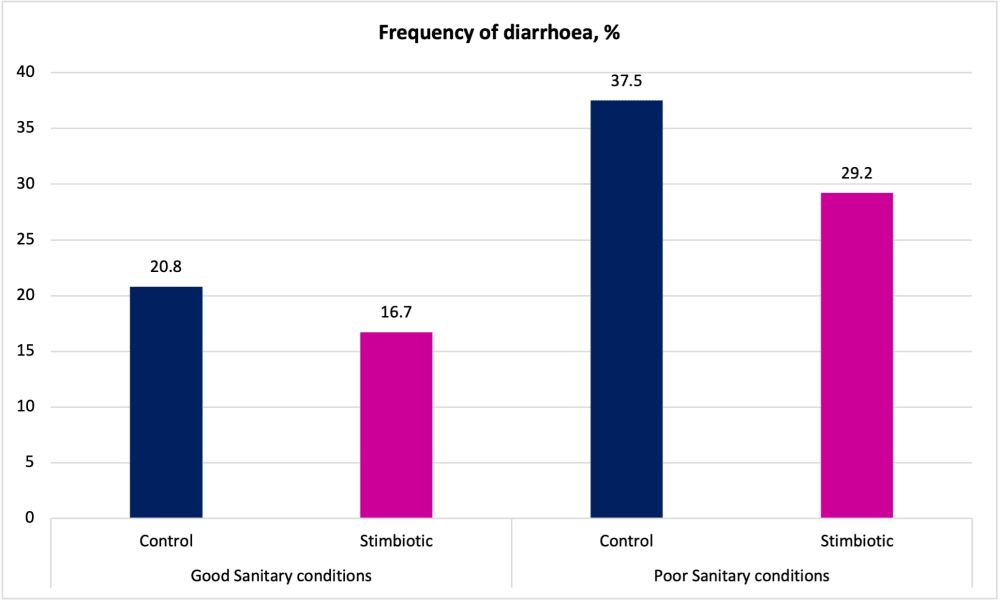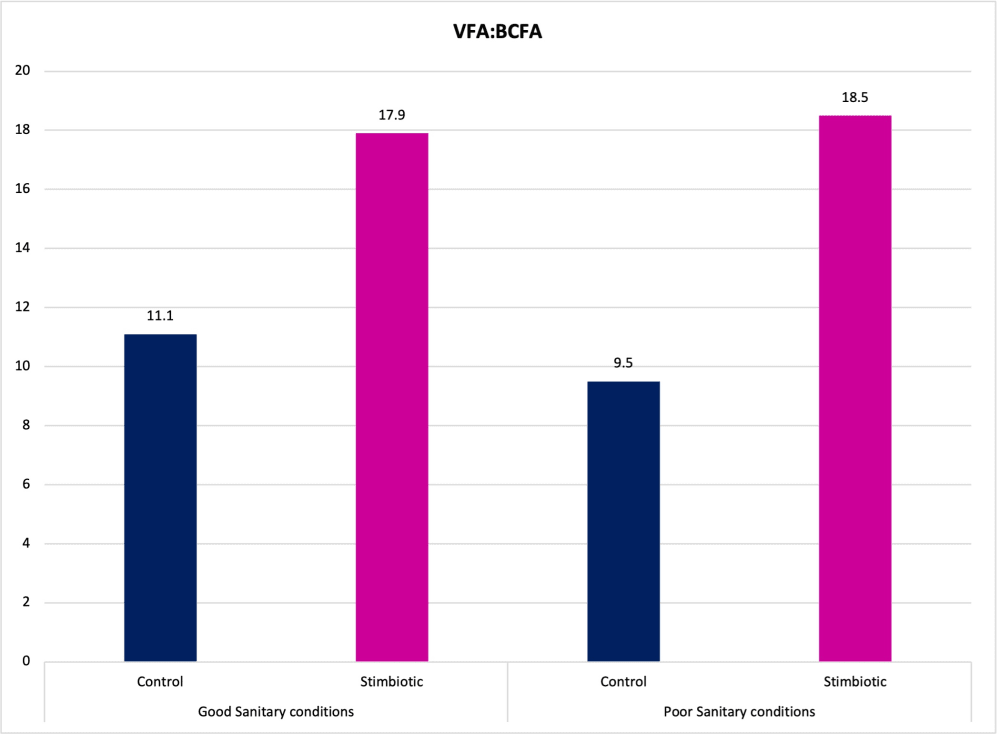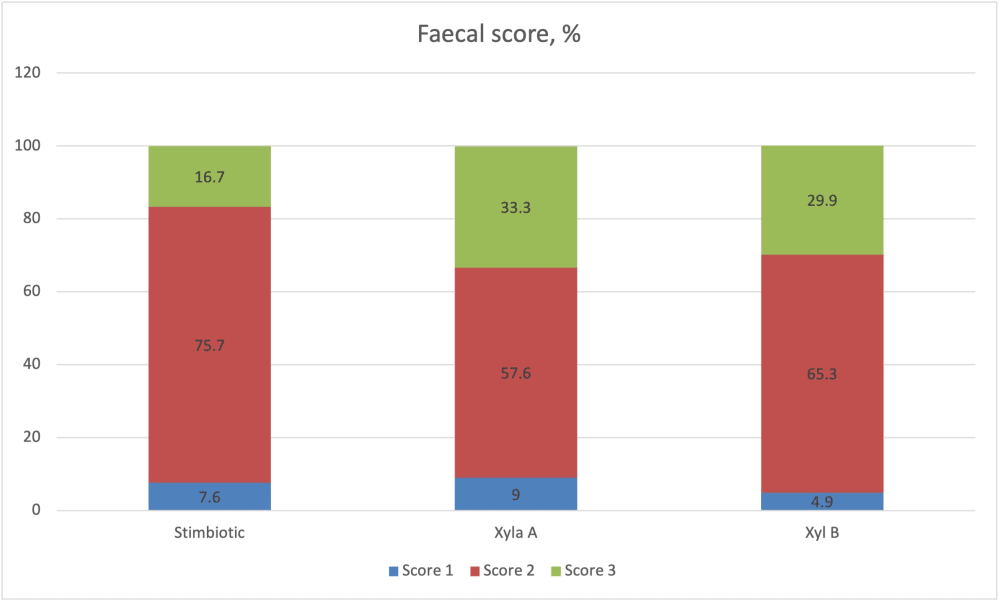Alternative approaches for ZnO-free piglet diets
Published Monday, 13th November 2023Dr. Dimcho Djouvinov & Dr. Gustavo Cordero, AB Vista, Marlborough, UK
The concept of zinc oxide (ZnO)-free diets can require all available measures in farm, swine management and feeding reduce the stress and improve immunity and gut health of piglets – a holistic approach is needed. In the absence of ZnO, piglets should be weaned after 28 days of age and a minimum body weight (BW) of 6.5kg with good BW uniformity.
In terms of feeding practice, the weaning diet needs to support gut health considering various parameters:
Highly digestible diets
Feeding high quality ingredients with low antinutrients content reduces the risk for post-weaning diarrhoea (PWD). Ingredients of animal origin (fish meal, spray dried plasma, skim milk powder, lactose) are preferable to raw plant materials. When necessary to feed plant-based protein - for example, due to cost considerations – then they should be processed to improve digestibility and eliminate antinutrient compounds: soybean protein concentrate, soya protein isolate, potato protein, extruded peas, etc.
Crude protein (CP) content
Keeping levels ≤17% reduces the amounts of undigested protein reaching the hind gut, therefore minimising the growth of E. coli and the production of branched chain fatty acids (BCFA), ammonia and toxic amines. BCFA are a product of microbial fermentation of branched chain amino acids and considered as a marker for excess dietary protein. Alongside reduced CP, all essential amino acids must be maintained in a proper ratio to digestible lysine.
Calcium content
Excess levels reduce feed palatability and increase buffering capacity of the diet – in turn, increasing stomach pH, which reduces pepsin activity and phytates solubility.
Feed additives
A wide range of products are used in attempt to replace ZnO: organic acids, medium chain fatty acids, botanicals, probiotics, prebiotics, postbiotics, stimbiotics, high doses of phytase. Despite different modes of action, the common aim of their application is to promote the correct microbiota balance, gut wall integrity and immunity as well as good gut health status.
Dietary fibre
Traditionally, this dietary compound has been assumed as an inert material or dilution factor for dietary nutrients and even having an antinutrient effect. Better understanding of the function of fibre in pig digestion resulted in the introduction and wide use of the neutral detergent fibre (NDF) as a standard parameter in swine nutrition.
Currently more advanced fibre measurement is possible, such as total dietary fibre (TDF) which is determined as the sum of lignin and non-starch polysaccharides (NSPs). NSPs represent the main proportion of fibre and play a functional role. Depending on their solubility in water, NSPs are usually split into soluble or insoluble fractions. Soluble NSPs play a role as a source for fermentation and increased short chain fatty acids (SCFA) production in the large intestine, whilst insoluble NSPs increase passage rate in the small intestine. Hence, the NSPs profile may significantly affect the gut microbiome, degree and type of fermentation and consequently, the health status of gut walls.
The holistic approach for replacement of therapeutic doses of ZnO may include additives which target dietary NSPs and promote the fibre-degrading microbiome and fibre fermentation without being a substrate for this microbiome growth.
The term ‘stimbiotic’ has been introduced recently and is defined as non-digestible but fermentable additives that stimulate fibre fermentability, but at a dose that is too low that the stimbiotic itself could contribute in a meaningful manner to volatile fatty acid (VFA) production. Stimbiotic supplementation is providing performance gains at the same time as improving gut health and animal resilience to the different challenges animals may face in regular commercial production; AB Vista’s stimbiotic Signis has seen positive outcomes in 88% of trials.
A challenge those who research intestinal microbiota face is to better understand the development of microbial populations and how they interact depending on multiple factors such as: age, diet and/or supplementation with additives, pathologies or factors external to the animal, such as those related to housing conditions or handling.
A poor sanitary condition in commercial production systems can have an adverse effect on growth rate and efficiency due to increased risk of bacterial infection. Signis, when fed to nursery pigs exposed to either a clean or dirty (room not cleaned and disinfected after previous pig population) environment, reduced diarrhoea frequency by around 20% in both scenarios (Figure 1).
Figure 1. Percentage of diarrhoea cases and faecal VFA:BCFA ratio in piglets kept in good and poor sanitary conditions.
The beneficial effect of the stimbiotic on diarrhoea frequency was partially associated with reduced protein fermentation as demonstrated by the increased VFA:BCFA ratio in the faeces.
The ability of the stimbiotic to support better gut resilience was confirmed in a research study with piglets when compared against two single xylanase preparations. The highest proportion of normal faecal score (2) and lowest diarrhoea incidence (3) was recorded in animals with stimbiotic-supplemented diets (Figure 2).
Figure 2. Faecal score in piglets fed stimbiotic, xylanase A or xylanase B. *Faecal score (1= constipation, 2= normal, 3= diarrhoea.
All diets in this trial were supplemented with 1500 FTU/kg of phytase. It is already widely recognised that high doses (superdosing = 3-5 times the standard dose of 500 FTU/kg) of phytase with proper characteristics considerably eliminates the anti-nutritional effect of phytate present in ingredients of plant origin. Phytate forms insoluble/unavailable complexes with proteins, Ca and some trace elements, including Zn; in addition, phytate inhibits pepsin and trypsin activities. However, phytase superdosing quickly destroys up to 90% of phytate, releasing not only P, but bound Zn as well, and recovering the activities of endogenous enzymes involved in protein digestion.
Superdosing of weaned piglets with 2,500 FTU/kg:
- Elevated their Zn blood serum levels by 20% (Walk et al., 2013) compared to non-supplemented animals, most probably due to improved dietary Zn availability and absorption.
- Contributed to a 6% reduction in PWD when compared to a diet without phytase (Walk et al., 2014).
Such a beneficial effect of superdosing on faecal score in piglets also suggests improved protein digestion in the upper gastrointestinal tract and reduced flow of non-digested protein to the hind gut that otherwise would be a substrate for microbial fermentation delivering harmful end products.
Conclusion
We can see that there are multiple strategies available when it comes to finding – and using – alternatives for the pharmacological dosage of ZnO in piglet feed. Viable options include the elimination of dietary anti-nutritional factors, stimulation of beneficial microbiota as well as feed additives that contribute to gut immunity. Superdosing phytase contributes to increased Zn absorption and reduced passage of undigested nutrients to the intestines, while Signis promotes fibrolytic microbiome growth aiding optimal gut health. Together with other measures, these products can become an integral part in strategies to replace medical ZnO in piglet diets.
Latest news
Stay ahead with the latest news, ideas and events.

Online Feed Fibre Calculator
Calculate the percentage of dietary fibre in your feed
Our calculator is designed for nutritionists and uses averages of global raw materials to calculate the dietary fibre content (plus other more in-depth fibre parameters) of finished animal feed. These parameters are available within AB Vista’s Dietary Fibre analysis service (part of our NIR service).
Sign up for AB Vista news
A regular summary of our key stories sent straight to your inbox.
SUBSCRIBE© AB Vista. All rights reserved 2025
Website T&Cs Privacy & Cookie Policy Terms & Conditions of Sale University IDC policy Speak Up Policy



























